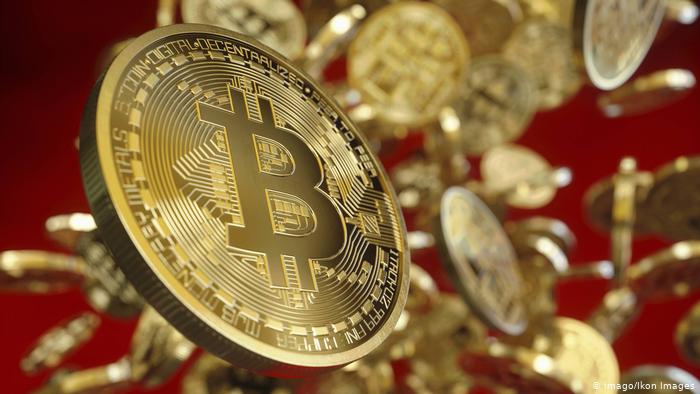Lrn&Shr
Latest News / Articles
Bitcoin is a cryptocurrency invented in 2008 by an unknown person or group of people using the name Satoshi Nakamoto and started in 2009 when its implementation was released as open-source software. It is a decentralized digital currency without a central bank or single administrator that can be sent from user to user on the peer-to-peer bitcoin network without the need for intermediaries. Transactions are verified by network nodes through cryptography and recorded in a public distributed ledger called a blockchain. Bitcoins are created as a reward for a process known as mining. They can be exchanged for other currencies, products, and services. (Source-Wikipedia)

Bitcoin has seen a remarkable development over the past few weeks
Bitcoin is trading at record levels with investors betting on the cryptocurrency to hedge against inflation as central banks continue printing money to help the global economy recover from the deepest recession since the Second World War.
The most famous cryptocurrency rose to over $20,000 on December 16 on the back of a 170% rally this year. The euphoric rise underscores the growing popularity of the 12-year-old digital coin that is still struggling to establish itself as a widely accepted, stable mainstream asset.
The impressive rally mirrors the 2017 bull run that saw Bitcoin price double to $19,511 in less than a year, forcing mainstream investors to stop and take notice of a digital coin that was often castigated by them. But the euphoria soon fizzled out; Bitcoin fell 70% the next year. The tumble that left many retail investors burned once again brought to the fore the coin's penchant for boom and bust.
Bitcoin's short history has been plastered with bouts of extreme volatility. In 2011, the digital asset skyrocketed 11,000% to $35 within months only to lose 90% of those gains in the following months. Two years later in 2013, the coin ascended to above $250 before falling more than 80%. Later that year, Bitcoin breached $1,000 to reach record levels. Just over a year later in 2015, it again found itself teetering at around $150.
Bitcoin fans say the current rally is unlike the coin's previous rallies, which were mainly driven by speculative small-time investors.
They point to the growing acceptability of digital coins with some central banks piloting their own versions. Then there is an endorsement from financial institutions such as Fidelity Investments and JP Morgan and public companies such as mobile payments firm Square, which has stored some of its cash in the form of Bitcoin.
A survey by Fidelity of 800 large institutional investors in the US and Europe found that more than a quarter of them owned Bitcoin. Fidelity, which manages $3.3 trillion in assets, said in August it was launching its first Bitcoin fund. The asset manager already has a unit that manages digital assets for clients.
A major endorsement for the controversial coin — dubbed a scam by many in its earlier days — came from payments company Paypal in October, when it allowed its customers to buy and sell Bitcoin and other cryptos using their accounts. Bitcoin has gained nearly 70% in value since then.
The Bitcoin mania has prompted some wild projections ranging between $25,000 to $300,000 per coin by the end of next year. Analysts cite too many buyers chasing an asset that is relatively in short supply to back their projections. Bitcoin supply has effectively decreased after a third so-called halving on May 11. The process cuts the rewards given to those who "mine" Bitcoin.
The lofty projections got a reality check on November 26, when Bitcoin plunged by close to $3,000 just as it was eyeing another record high. The drop was blamed on profit buying by investors ahead of the milestone and rumors that the US was considering new rules to regulate cryptocurrencies. Earlier in March, Bitcoin had fallen 40% in just one day at the beginning of the coronavirus pandemic.
The massive swings in prices show that Bitcoin is far from being the mature asset that its aficionados claim. The coin remains largely unregulated — a feature that increases its appeal among its fans but at the same time drives others away. Bitcoin remains susceptible to hacking and money laundering.
The digital asset remains extremely volatile. It has posted an average daily move of 2.7% this year, according to Bloomberg. By comparison, the price of gold saw swings of 0.9%. Despite all the hype around Bitcoin, the digital asset remains concentrated in very few hands, adding to its volatility.
Bitcoin is often compared to gold, a classic safe haven and hedge against inflation. But unlike the digital coin, the precious metal has seen its fortunes reversed after trading above $2,000 an ounce for the first time in August as investor jitters spread due to the pandemic.
Assets like Bitcoin and gold help insulate investors from a drop in the purchasing power of a currency caused by the loss of its value due to rising prices.
Many experts feel gold's recent poor performance is fathomable as breakthroughs on the vaccine front mean less demand for safe havens and inflation is not expected to go through the roof anytime soon. This means that Bitcoin's rally may have more to do with speculation than its role as a hedge against price rise.
Share This:
'Abbreviations - Multiple Meanings'-Language - Also Read all Latest News & Articles
Source: www.dw.com
Copyright © 2019 Cognitive Lrn&Shr . all rights reserved.